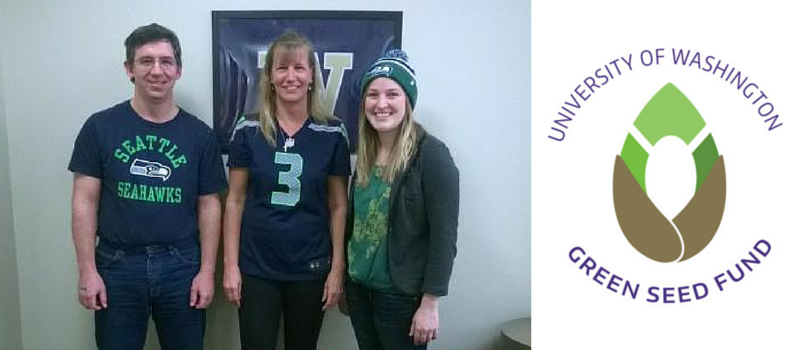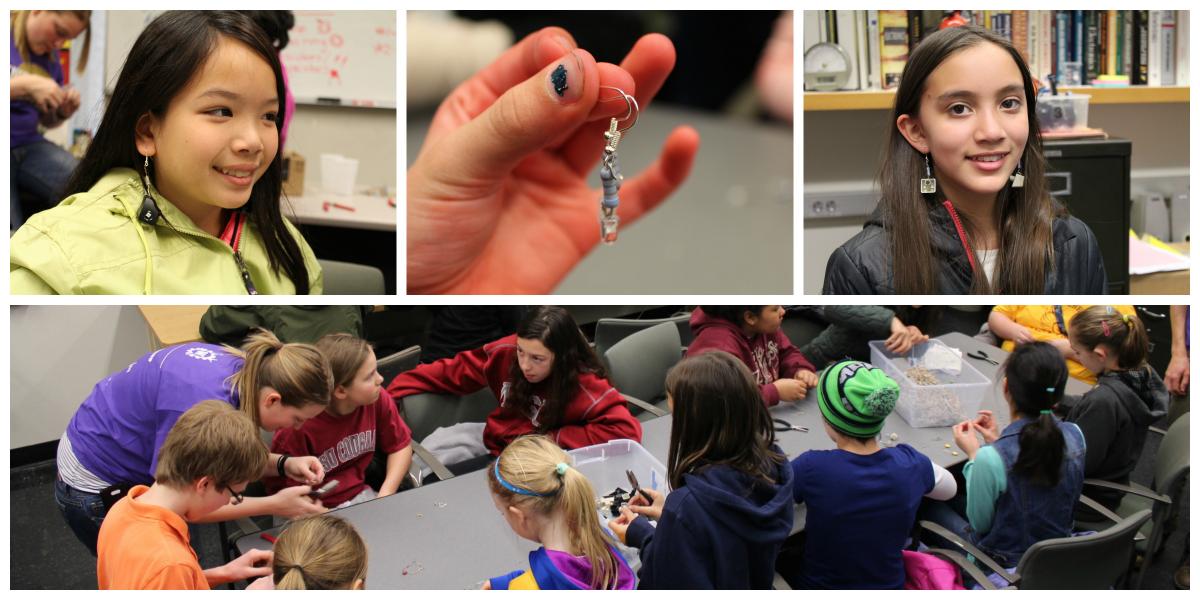
By Mishu Pham-Whipple
Electronic waste, or e-waste, is yet another new problem inhabitants of the 21st century must face. There are ways to recycle this waste but the recycling of this e-waste often looks much different from what we imagine recycling to look like. The waste is often shipped to developing countries through loopholes in international convention where toxic components are handled by workers who do not have proper training or safety practices. Only a portion of the materials are actually recycled and the rest is either discarded or burned. With solutions to dealing with electronic waste being limited and the amount of electronic waste being produced increasing exponentially by the world’s growing consumption of electronic products, new ways of reducing and recycling e-waste are sought.
To tackle the e-waste produced by the University of Washington, a research team - comprised of Denise Wilson, Jack Lockhart, and Rachel Roberts - with a grant from the Green Seed Fund, sought to find ways to improve the collection, recycling, repurposing and redirecting of electronic waste generated by academic research and education at the university.
In order to find a green solution to handling e-waste, the team first had to understand the situation by estimating the total volume, type, and destination of e-waste generated by the UW. They conducted interviews of faculty, lab technicians, and staff, as well as representatives from UW Recycling and Total Reclaim, a local recycling company dedicated to sustainability and contracted to the UW in processing the UW's electronic waste as channeled through UW Surplus in a responsible way. Understandably, UW Surplus only accepts university property and is not responsible for recycling everything. Nevertheless, UW Surplus is a great resource but additional electronic waste produced by the university's activities must still be handled, processed, and disposed of properly. Additionally, the broader issue of e-waste handling outside of the university was calling for attention.
After understanding the scope of the issue and feasibility of solutions, the team carried out several strategies to educate, reduce, reuse and repurpose the e-waste created on and off campus. Strategies aimed within the university include placing recycling stations in departments with heavy electronic use on campus, creating educational and informational materials, and conducting seminars and lectures to educate faculty and students on all campuses about the proper handling of e-waste in the academic research context.. In addition to strategies on campus, the team also implemented strategies to those off campus, particularly grade school kids. The team built educational art kits using electronic components that were then used in workshops that they hosted. The team noted that one of the most successful events at Engineering Discovery Days for electrical engineering was a jewelry making event for kids, where they educated students about e-waste and made e-waste jewelry souvenirs to remember the lesson.
As the funding for the year long project comes to a close, the team plans to maintain their educational email and mailing e-waste campaign, as well as their webpage. The team also hopes to continue the use of the e-waste bins and programs as well as educational outreach to K-16 geared toward increasing awareness of the volume of electronic waste and proper recycling practices.
Learn more by viewing the slides from the team's presentation to the Environmental Stewardship Committe.

Students used repurposed electronics to create jewelry at Engineering Discovery Days.